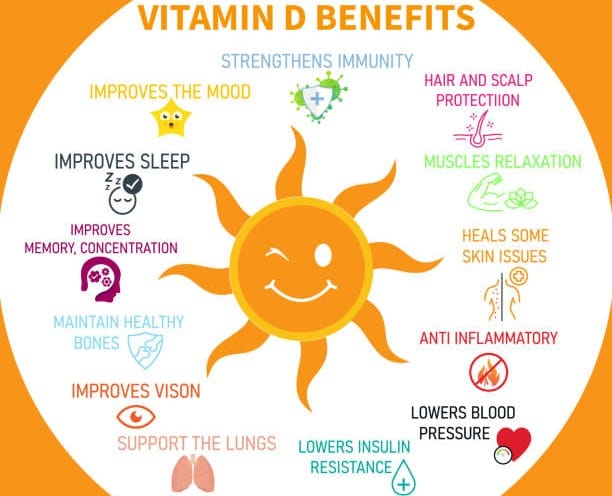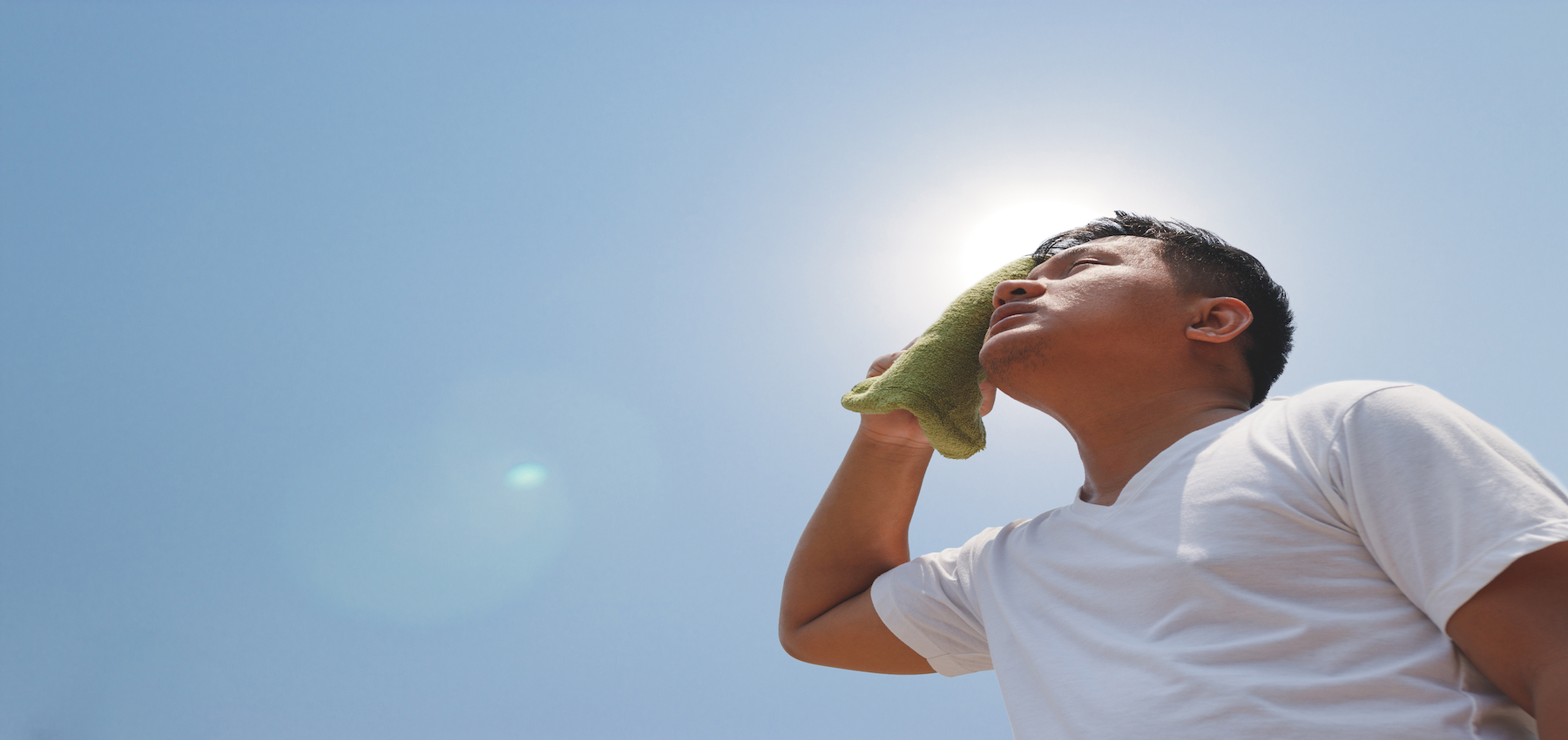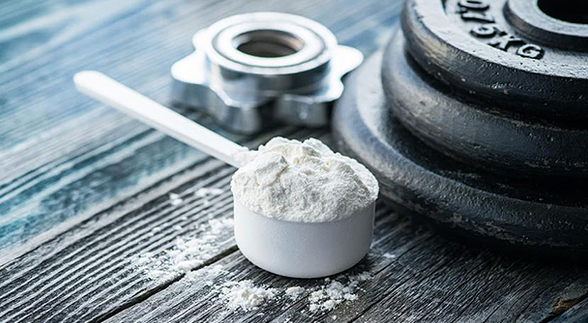The Great Vitamin D Debate: Sunlight vs. Supplements
Beware: too much of a good thing, and you could find yourself in Hypervitaminosis D Land, with nausea, vomiting, and kidney damage as your not-so-friendly tour guides.

Everyone gather 'round as we embark on the Great Vitamin D Debate—a topic hotter than a Texas summer afternoon. Let's dive into whether getting your vitamin D supply from sunlight is better than popping supplements like they're Tic- Tacs. I have been approached by friends, colleagues, and the occasional random stranger at Costco about this burning issue. So, here’s the lowdown in true authentic fashion, with a dash of scientific substantiation to keep things credible.
Sunlight: Nature's Free Drug Dealer

Benefits
First off, let’s talk about sunlight. It's that big, fiery ball in the sky that Texans spend their lives avoiding due to the inevitable sweat fest. But get this—when UVB rays from sunlight hit your skin, they kick-start a magical process that converts 7-dehydrocholesterol (say that five times fast) into vitamin D3, which your body then turns into the active form of D3, calcitriol. This process is well-documented in dermatological studies1
Incident Alert
Just last week, my neighbor Alex and I were mowing our lawns in unison when he shouted from his sidewalk, "Tom," he said, "I'm getting my vitamin D from the sun right now! It's free, right?" Yes, Alex, it’s free. Sunlight is the thrift store of vitamins. You get what you need without spending a dime. Plus, it's known to lift your mood, help you sleep, and keep your body clock ticking properly via your circadian rhythm. Not bad, huh? These benefits are supported by research showing that sunlight exposure increases serotonin production, which can improve mood and sleep quality2. But you have to be careful with it; more on this later.
Time Required for Adequate Intake
Now, how much sun do you need? The true answer is: it depends.
If you’re of the milky white, pale persuasion, as I am, about 10-30 minutes of midday sun a few times a week should do the trick. For those with more melanin blessed, you’ll need a bit more. Perhaps enough time to mow and trip your grass or solve a Rubik's Cube. Realistically, studies indicate that people with darker skin may require 3 to 5 times longer sun exposure than lighter-skinned individuals to produce the same amount of vitamin D3.
Potential Drawbacks
Of course, nothing good comes without a catch: everything in moderation, as they say. Too much sun, and you might end up looking like a well-done lobster. Prolonged exposure can lead to sunburn, premature aging, and a higher risk of turning into a cautionary tale of skin cancer. According to the Skin Cancer Foundation, UV radiation is a proven human carcinogen4. On the other hand, those quaint winter months in places like Minnesota can make it difficult to get enough sun on a consistent basis.
Vitamin D Supplements: A Modern Convenience

Benefits
Then there's the supplement route. They may come in these little capsules that serve like insurance policies for your bones. They offer consistent vitamin D levels, rain or shine. Easy to take and precise in dosage, they fit snugly into our modern, indoor lifestyles. Research supports the efficacy of supplements in maintaining adequate vitamin D levels, particularly in populations at risk of deficiency5.
Incident Alert
I ran into Diane, a longtime childhood friend while getting some sushi the other day. "Tom, I not getting outside enough with my job and the little one keeping me busy. Should I take supplements?" Absolutely.
With supplements, you can avoid the drama of chasing sunlight like a cat after a laser pointer. Plus, you get exact amounts tailored to your needs—no guessing games.
Recommended Dosage
For most adults, the recommended dosage is between 600 to 800 IU daily6. If you're deficient, your doctor might suggest more, but don’t go rogue and start doubling up. This is not a game of 'more is better'. In fact, let's talk about what really happens when you over supplement vitamin D.
Potential Drawbacks
Beware: too much of a good thing, and you could find yourself in Hypervitaminosis D Land, with nausea, vomiting, and kidney damage as your not-so-friendly tour guides. And keep in mind, vitamin D is fat-soluble, meaning it loves to cozy up in your fat cells, leading to potential toxicity over time7. Let me be clear: "..leading to potential toxicity over time." means that overdosing on vitamin D will cause it to accumulate in your fat cells and potentially poison you. Not good.
Sun Exposure and Fatigue: What's the Connection?

The Science Bit: A Little Nerdier.
The Science Bit
Here's the zinger: ever wonder why you feel like a deflated balloon after a day in the sun? It’s not just about the biochemical magic of converting 7-dehydrocholesterol into vitamin D3—though that part is fascinating and requires UVB radiation rather than the body's energy. Additionally, your skin isn't particularly energy-intensive in the conventional sense (like burning calories). The real culprits are the body’s other responses to prolonged sun exposure. They involve several physiological responses that can lead to fatigue. which indeed deplete your energy reserves.
Chemical Processes Leading to Fatigue
- Thermoregulation: Your body’s air conditioning system, AKA thermoregulation, burns more calories trying to keep you cool1. When you're out in the sun, your body works overtime to maintain an optimal temperature, increasing metabolic rate and energy expenditure.
- Dehydration: Sweating like a marathon runner? That’s your body shedding fluids faster than you can say "refill." Dehydration is a common cause of fatigue8. As you lose water through sweat, your blood volume decreases, making your heart work harder to pump blood—leading to that tired, worn-out feeling.
- Serotonin and Melatonin: Sunlight boosts serotonin (hello, happy vibes!), but too much, and you'll find yourself turning into a walking yawn-fest as melatonin kicks in post-sun exposure. The interplay between serotonin and melatonin is well-documented in sleep research9. This shift can make you feel drowsy and fatigued after extended time in the sun.
By understanding how these factors interplay, we get a clearer picture of why sun exposure can leave us feeling so wiped out.
So, while your body isn’t necessarily burning a ton of calories just converting vitamin D, it’s all the other stuff going on—like staying cool and hydrated—that turns you into a tired puddle by the end of the day.
Conclusion
So, there you have it—the pros and cons of sunlight versus supplements, wrapped up in a neat, sunscreen-scented package. Sunlight offers a natural, cost-free solution with awesome extra benefits, but watch out for the lobster effect and seasonal scarcity. Supplements provide a reliable, controlled source but can be tricky if overdone.
Balance some sunny strolls with a diet rich in vitamin D and smart supplementation. And remember, whether you're basking in the rays or reaching for a capsule, moderation is key.
Now go forth and be radiant—just not too radiant, okay?
Footnotes
- Holick, M. F. (2007). Vitamin D deficiency. New England Journal of Medicine, 357(3), 266-281. ↩
- Lamberg-Allardt, C. (2006). Vitamin D in foods and as supplements. Progress in Biophysics and Molecular Biology, 92(1), 33-38. ↩
- Clemens, T. L., et al. (1982). Increased skin pigment reduces the capacity of skin to synthesize vitamin D3. The Lancet, 319(8263), 74-76. ↩
- Skin Cancer Foundation. (n.d.). Ultraviolet (UV) Radiation. ↩
- Vieth, R. (1999). Vitamin D supplementation, 25-hydroxyvitamin D concentrations, and safety. The American Journal of Clinical Nutrition, 69(5), 842-856. ↩
- Institute of Medicine (US) Committee to Review Dietary Reference Intakes for Vitamin D and Calcium. (2011). Dietary Reference Intakes for Calcium and Vitamin D. National Academies Press. ↩
- Jones, G. (2008). Pharmacokinetics of vitamin D toxicity. The American Journal of Clinical Nutrition, 88(2), 582S-586S. ↩
- Wentz, L. M., et al. (2018). Exercise-induced dehydration and vitamin D status. Nutrients, 10(3), 294. ↩
- Sawka, M. N., et al. (2007). Human adaptation to hot environments. Comprehensive Physiology, 2011. ↩
- Armstrong, L. E. (2012). Challenges of linking chronic dehydration and fluid consumption to health outcomes. Nutrition Reviews, 70(suppl_2), S121-S127.




